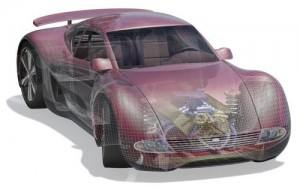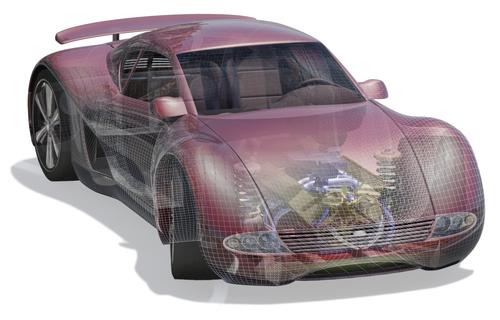While the need for improved fuel efficiency hangs over the automotive industry — especially with the impending CAFÉ standards — there are also cultural changes that direct design decisions.

Stephen Jockusch, Siemens PLM’s vice president for automotive industry strategy, outlined the company’s auto design focus at last week’s Siemens PLM User Conference. The three principles Jockusch noted were climate change, urbanization, and demographic change.
For climate change, Jockusch noted improvements in the fuel efficiency of the internal combustion engine, as well as development in hybrids and electrical vehicles. The goal is zero emission. Lightweight materials also play a role in reducing energy consumption. Highly integrated actuators are one area of focus for Siemens.
In the area of urbanization, he pointed to “intelligent mobility through smart grid integration.” That means adding increasingly intelligent communications systems to vehicles. Jockusch sees a time when the car will generate and store electricity that can be sold back to the grid at the end of a trip.
The demographic change that is part of Siemens’s focus is related to the aging populations in the Americas and Europe. The goal is to safely extend the mobility of elderly drivers. Ultimately, that would translate into zero accidents. And while the goal may be farfetched, any movement toward it through improved design fits into Siemens’s plans. The company aims to make progress through improved driver control over the vehicle.
Jockusch says the progress in these three areas will involve enhancements in chassis design, as well as electrical systems and components, simulation, programming, and validation, as well as manufacturing processes.
He acknowledged that work on design by auto suppliers such as Siemens brings up some thorny issues about ownership over intellectual property. If the supplier develops a solution while working with an automotive client, who owns the solution? Can the supplier share the solution with the client’s automaker competitors? “This is an area of continual discussion,” Jockusch told Design News. “About 70 percent of the solutions are industry best-practices, about 20 percent involve industrial solutions, and about 10 percent is customer specific.”
Jockusch noted that the 10 percent that constitutes customer-specific solutions are owned by the automotive customer. “We engage with our customers on whether these solutions can be shared openly with the automotive industry,” he told us. In recent years, automakers have become increasingly willing to share intellectual property so the whole industry can participate in solving technological challenges. “Our goal is to make as much available to the industry as possible,” said Jockusch. “That’s the intention of both Siemens and its automotive customers.
Source: http://www.designnews.com/author.asp?section_id=1386&doc_id=264316&itc=dn_analysis_element&



